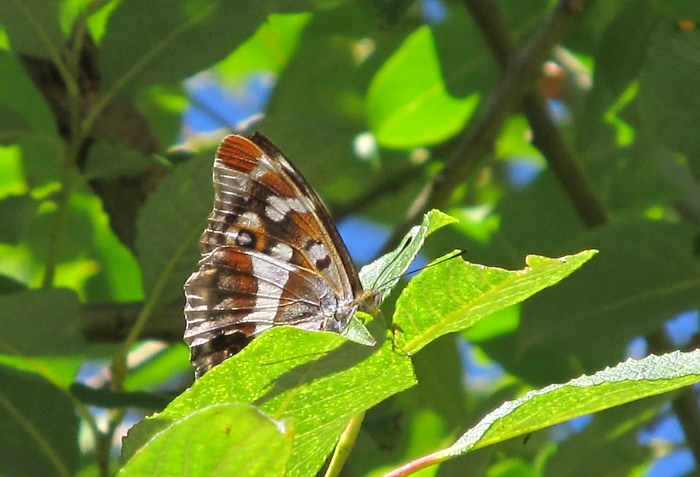Re: Padfield
Posted: Sun Aug 31, 2014 7:17 pm
The sun shone today but very, very little flew in Valais. I visited a site mainly to look for populi and ilia cats - neither of which I found, though I now find camilla cats without even looking:

The only blue flying, at what is normally a fantastic site, was chalkhill:

A fair few Satyrids were on the wing - meadow browns, small heaths, speckled woods, Scotch arguses and dryads - and four fritillaries were flying - silver-washed, Queen of Spain, high brown and dark green.

(female silver-washed, form valesina)

(female high brown)
Other than these species, a few whites and a single swallowtail were enjoying the morning sun. The site normally produces in abundance all through September.
A surprise sighting, though, was Jonathan Livingstone Bat, happily cruising around catching insects in the middle of the day (11h30), in full-on sunshine!

I think he was getting beetles. Whenever his prey showed up in a picture it looked solid and shiny:

I'm not sure what species this is. It wasn't behaving like Daubenton's (which I've seen flying in the daytime in spring, on emergence from hibernation), though it was near a stream - but then again, it wasn't really behaving like a bat.
I moved on to another site to look for reducta cats but the sun had mostly gone by then so it's difficult to judge how depleted the butterfly scene there was. I did see rosy grizzeld skipper and scarce copper, which was nice, but only a handful of other species.


In the hotspots, where reducta flies in the greatest numbers, the honeysuckle was already over - or perhaps grown over. I couldn't find any, anyway, and I know it's there as I found caterpillars on it in the spring. In the shade the honeysuckle was fine, but reducta doesn't lay in the shade. I did manage to find some evidence of reducta in half-shade at one or two places. There were no cats in evidence but there is no mistaking the leaf damage (and camilla doesn't fly at this site):


And here's Minnie:

Guy

The only blue flying, at what is normally a fantastic site, was chalkhill:

A fair few Satyrids were on the wing - meadow browns, small heaths, speckled woods, Scotch arguses and dryads - and four fritillaries were flying - silver-washed, Queen of Spain, high brown and dark green.

(female silver-washed, form valesina)

(female high brown)
Other than these species, a few whites and a single swallowtail were enjoying the morning sun. The site normally produces in abundance all through September.
A surprise sighting, though, was Jonathan Livingstone Bat, happily cruising around catching insects in the middle of the day (11h30), in full-on sunshine!

I think he was getting beetles. Whenever his prey showed up in a picture it looked solid and shiny:

I'm not sure what species this is. It wasn't behaving like Daubenton's (which I've seen flying in the daytime in spring, on emergence from hibernation), though it was near a stream - but then again, it wasn't really behaving like a bat.
I moved on to another site to look for reducta cats but the sun had mostly gone by then so it's difficult to judge how depleted the butterfly scene there was. I did see rosy grizzeld skipper and scarce copper, which was nice, but only a handful of other species.


In the hotspots, where reducta flies in the greatest numbers, the honeysuckle was already over - or perhaps grown over. I couldn't find any, anyway, and I know it's there as I found caterpillars on it in the spring. In the shade the honeysuckle was fine, but reducta doesn't lay in the shade. I did manage to find some evidence of reducta in half-shade at one or two places. There were no cats in evidence but there is no mistaking the leaf damage (and camilla doesn't fly at this site):


And here's Minnie:

Guy







































































